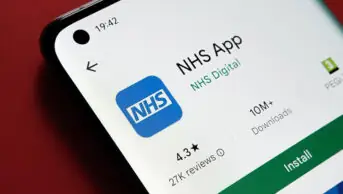
Charlie Milligan
The number of items dispensed through electronic prescribing increased by nearly a quarter in March 2020, according to data published by NHS Business Services Authority (BSA).
The data, published on 1 June 2020, also revealed a 14.5% increase in the number of items dispensed by community pharmacies in England overall during that time — from 81,066,027 in February 2020 to 92,840,308 items in March 2020.
Pharmacy trade bodies have attributed the rise in dispensing to demand from patients wanting “medicines to have in stock at home” during the COVID-19 pandemic.
Of the items dispensed in March 2020, 78,325,784 were dispensed through prescriptions issued via the electronic prescription service (EPS).
This is a 22% increase on the 64,218,096 items dispensed through the EPS in February 2020.
Community pharmacies saw a surge in EPS nominations in March 2020 with Boots, LloydsPharmacy and Rowlands Pharmacy collectively seeing 121,142 additional nominations within the week ending 20 March 2020.
NHS Digital also continued its roll out of EPS phase 4, enabling GPs to issue an electronic prescription even for patients who have not nominated a pharmacy.
Items dispensed through the EPS accounted for 84% of all items in March 2020. This was up from 79% the previous month.
In August 2019, NHS Digital told The Pharmaceutical Journal that the percentage of prescriptions going through the EPS was expected to reach “the mid 90s” within the subsequent 12 months.
Malcolm Harrison, chief executive of the Company Chemists’ Association, said the overall rise in dispensing “demonstrates how our members had to quickly adapt” to meet demand during the pandemic.
He added that demand rose in March 2020 “as people wanted supplies of their regular, and sometimes not so regular, medicines to have in stock at home”.
“We’d now like to see our community pharmacy sector get fair funding from the government for its work on the frontline of the NHS during the crisis”, he said.
“Community pharmacies have stayed open throughout the pandemic and have needed to pay more for the medicines they supply and cover extra COVID-19-specific costs, such as providing personal protective equipment and extra cleaning.”
The NHS BSA data also revealed a 30% decline in the number of medicines use reviews (MURs) carried out from 114,328 in February 2020 to 80,728 in March 2020.
Community pharmacies are able to claim £28 per MUR.
However, COVID-19 frequently asked questions on the Pharmaceutical Services Negotiating Committee’s (PSNC’s) website note that if “the notional budgets for MUR and [the new medicines service] are not spent, the unused funding is distributed to contractors via other fees and allowances, so the funding is not lost to the sector”.
“The COVID-19 pandemic brought about a surge in prescription numbers, meaning pharmacy teams had to focus on their core dispensing role to best support patients and the NHS,” said Mike Dent, director of pharmacy funding at the PSNC.
“Whilst this left less time for the provision of other services, it should be noted that where agreed budgets for services such as MURs are not spent, the unused funding is distributed to contractors via other fees and allowances, so the funding is not lost to the sector.
“During negotiations on wider funding, the PSNC has described a wide range of factors impacting on community pharmacy during the pandemic, including the reduction in income from services,” he added.

